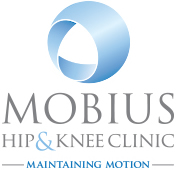
Unicompartmental knee replacement/Patellofemoral joint replacement
In unicompartmental knee replacement or patellofemoral joint replacement, only a portion of the knee is resurfaced. This procedure is an alternative to total knee replacement, for patients whose disease is limited to just one area of the knee.
Because a partial knee replacement is done through a smaller incision, patients usually spend less time in the hospital and return to normal activities sooner than total knee replacement patients. Also, because the bone, cartilage, and ligaments in the healthy parts of the knee are kept, many patients report that a partial knee replacement feels more natural than a total knee replacement.
Your knee is divided into three major compartments:
- Medial compartment (the inside part of the knee)
- Lateral compartment (the outside part of the knee)
- Patellofemoral compartment (the front of the knee between the patella and the femur)
Advanced osteoarthritis that is limited to a single compartment may be treated with a unicompartmental knee replacement or patellofemoral joint replacement. During this procedure, the damaged compartment is replaced with metal and plastic. The healthy cartilage and bone, along with all the ligaments, are preserved.
To be a candidate for partial knee replacement, your arthritis must be limited to one compartment of your knee. In addition, if you have any of the following characteristics, you may not be eligible for the procedure:
- Inflammatory arthritis
- Significant knee stiffness
- Ligament damage
The partial knee replacement is usually performed under general anaesthesia and this operation usually lasts between 1 and 1.5 hours.
There are three basic steps in the procedure:
- Prepare the bone: We will use special saws to remove the cartilage from the damaged compartment of your knee.
- Position the metal implants: The removed cartilage and bone is replaced with metal coverings that recreate the surface of the joint. These metal parts are typically held to the bone with cement.
- Insert a spacer (only in unicompartmental knee replacement): A plastic insert is placed between the two metal components to create a smooth gliding surface.
Complications/rehabilitations are almost the same as those of total knee replacement. Partial knee replacement patients usually experience less post-operative pain, less swelling, and have an easier rehabilitation than patients undergoing total knee replacement. In most cases, patients go home 1 to 3 days after the operation.





